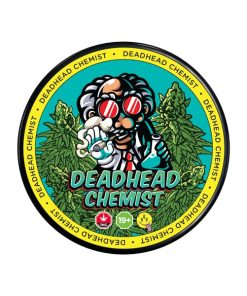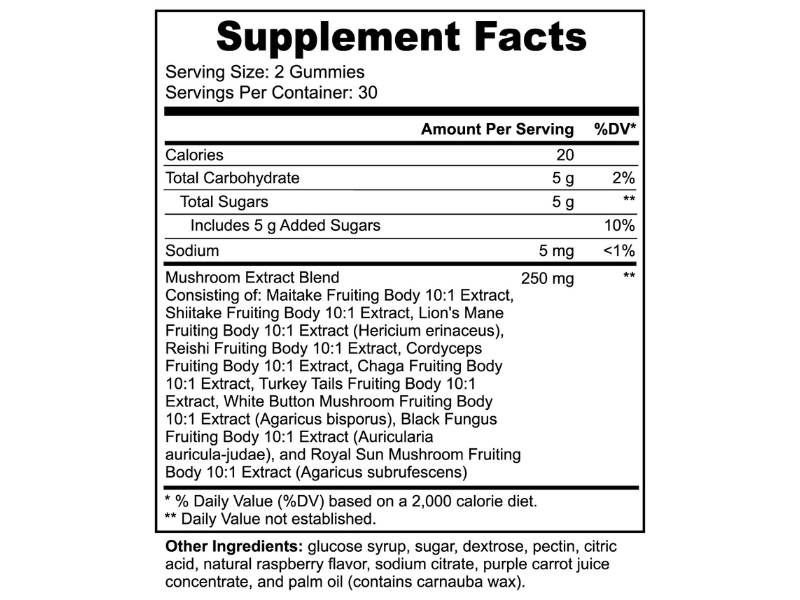-
×
 Deadhead Chemist | Bubblegum Hash
2 × $25.00
Deadhead Chemist | Bubblegum Hash
2 × $25.00
CBD, Magic Mushrooms, Psilocybin
How to Read Mushroom Supplement Labels
With functional mushrooms like Lion’s Mane, Reishi, and Cordyceps trending everywhere from wellness shops to coffee blends, it’s more important than ever to know what’s actually inside your mushroom supplement.
Unfortunately, not all mushroom products are created equal — and many are underdosed, made from inferior parts of the mushroom, or filled with cheap fillers like grain.
Here’s your quick, expert-backed guide to decoding mushroom supplement labels so you get the real benefits — not just a buzzword.
🔍 1. Look for “Fruiting Body” (Not Just Mycelium)
Fruiting body = the actual mushroom cap and stem
Mycelium = the root-like network, often grown on grain
✅ The fruiting body contains the highest levels of active compounds like beta-glucans, triterpenes, and ergothioneine.
❌ Mycelium on grain is cheaper and contains more starch than mushrooms — but it’s often sold as “mushroom” on labels.
Look for:
- “100% fruiting body” or “made from fruiting bodies”
- Avoid: “Mycelium biomass,” “myceliated grain,” “mycelium on rice/oats”
🧪 2. Check for Beta-Glucan Content
Beta-glucans are the key immune-supporting compounds found in mushrooms.
✅ Look for products that list a % of beta-glucans on the label (typically 20–40% for a quality extract).
❌ If the label lists only “polysaccharides,” it might be hiding cheap starches — not the good stuff.
Look for:
- “30% beta-glucans” or similar
- Avoid vague: “60% polysaccharides” with no beta-glucan breakdown
🔬 3. Look at the Extraction Method
Mushrooms need to be extracted to unlock their active compounds:
- Hot water extraction → great for beta-glucans (Reishi, Turkey Tail, Shiitake)
- Alcohol extraction → great for triterpenes and fat-soluble compounds (Reishi, Chaga)
- Dual extraction → combines both for full-spectrum potency
✅ Look for labels that say “dual-extracted” or list extraction method
❌ Avoid brands that don’t mention how the mushrooms are processed
📦 4. Dose Matters: Check the Milligrams
To get the real benefits, you need clinically relevant doses:
| Mushroom | Effective Daily Range |
| Lion’s Mane | 500–1000 mg (fruiting body) |
| Reishi | 1000–2000 mg |
| Cordyceps | 1000–3000 mg |
| Turkey Tail | 1000+ mg |
| Chaga | 500–1500 mg |
✅ Your label should clearly show how many mg per serving
❌ If it just says “mushroom blend” or a low-dose proprietary mix, skip it
🚩 5. Watch for Red Flags
Beware of these signs the product may be ineffective or low-quality:
🚫 Proprietary blends – often hide underdosed ingredients
🚫 No mention of extraction or active compounds
🚫 “Made with mycelium” or no mention of fruiting body
🚫 Overhyped claims like “cures disease” or “instant results”
🧘♀️ 6. Bonus: Other Good Signs to Look For
✅ Certified Organic – especially for mushrooms grown in the U.S. or China
✅ Third-party lab tested – ensures purity and potency
✅ No fillers, starches, or added sugars
✅ Transparent sourcing – tells you where the mushrooms were grown or wild-harvested
🧠 Final Checklist: How to Spot a High-Quality Mushroom Supplement
✅ Clearly lists fruiting body
✅ Specifies beta-glucan content
✅ Mentions dual or hot water extraction
✅ Lists mg per serving (not just a proprietary blend)
✅ Is organic and third-party tested
Bottom Line:
If the label isn’t transparent, don’t trust the product — especially when it comes to something as powerful and subtle as medicinal mushrooms. A well-labeled supplement gives you the confidence that you’re actually getting the benefits you’re paying for.
20 .Are Mushroom Blends More Effective Than Single-Strain Supplements?
If you’ve explored the world of functional mushrooms, you’ve likely noticed two types of supplements:
- Single-strain formulas (like just Lion’s Mane or just Reishi)
- Blends featuring several mushrooms in one product
So which is more effective — and more importantly, which is right for you?
Here’s a breakdown to help you decide between mushroom blends vs. single-strain supplements based on your goals, lifestyle, and budget.
🍄 What Are Mushroom Blends?
Mushroom blends combine multiple functional mushrooms into one supplement. A common mix might include:
- Lion’s Mane – for cognitive support
- Cordyceps – for energy and stamina
- Reishi – for stress reduction and sleep
- Chaga – for antioxidant and immune support
- Turkey Tail – for gut and immune balance
Think of it as a broad-spectrum formula designed to support overall wellness.
✅ Benefits of Mushroom Blends
1. Full-Body Support
You get multiple benefits — immune, energy, brain, stress — in one daily dose.
2. Synergistic Effects
Certain mushrooms may enhance each other’s effects, improving absorption and function.
3. Convenience
Instead of taking 4–5 separate products, you get a complete wellness formula in one capsule, powder, or drink.
4. Beginner-Friendly
Great for those new to mushrooms who want to “sample” a wide range of benefits.
❌ Limitations of Blends
- Lower Dosages per Mushroom: Some blends underdose each mushroom to fit everything into one capsule.
- Lack of Specific Focus: May not deliver the clinical dose needed if you have a specific concern like anxiety, fatigue, or cognitive decline.
- Proprietary Blends: If the label hides dosages in a “proprietary formula,” you don’t know how much of each mushroom you’re getting.
🍄 What Are Single-Strain Mushroom Supplements?
These products focus on one mushroom only, allowing for:
- Targeted benefits (e.g., only Lion’s Mane for focus or only Reishi for sleep)
- Higher, therapeutic-level doses
- Better suited for specific health goals
✅ Benefits of Single-Strain Supplements
1. Precise and Potent
Allows you to reach effective daily dosages supported by research (e.g., 1000 mg of Lion’s Mane for neurogenesis).
2. Goal-Oriented
Perfect if you want to target a specific need like:
- Focus → Lion’s Mane
- Energy → Cordyceps
- Sleep/stress → Reishi
- Gut → Turkey Tail
3. Stackable
You can mix and match single-strain mushrooms to build a personalized protocol.
❌ Limitations of Single-Strain Supplements
- Less Convenient: May require taking multiple capsules or powders if you want multiple benefits.
- Not Ideal for Beginners: You may not know which mushroom suits you best without experimentation.
- More Expensive (if buying several single mushrooms)
⚖️ Blends vs. Single-Strain: Which Should You Choose?
| Your Priority | Best Option |
| General wellness & immune support | Blends |
| Specific results (e.g., better sleep or focus) | Single-Strain |
| Beginner trying mushrooms for the first time | Blends |
| You want control over dosage & stacking | Single-Strain |
| Budget-conscious, 1 product only | Blend (with clear dosages) |
| Experienced biohacker | Single-Strain or Custom Stack |
🔍 Pro Tip: What to Look for (In Both Types)
Whether you’re choosing a blend or single mushroom, check for:
✅ Fruiting body (not just mycelium)
✅ Beta-glucan content (20%+ is ideal)
✅ Clear dosage per mushroom
✅ Extraction method (hot water, dual-extracted)
✅ Organic & third-party tested
🧠 Final Thoughts
Mushroom blends offer an excellent, all-in-one solution for general wellness, prevention, and convenience — ideal for beginners and daily use.
Single-strain supplements are better for those who want targeted, therapeutic-level support for specific goals like cognition, athletic performance, or sleep quality.
👉 Want both? Start with a high-quality blend, and add a single-strain mushroom that meets your personal goal — like stacking Lion’s Mane with a blend for extra brain power.

